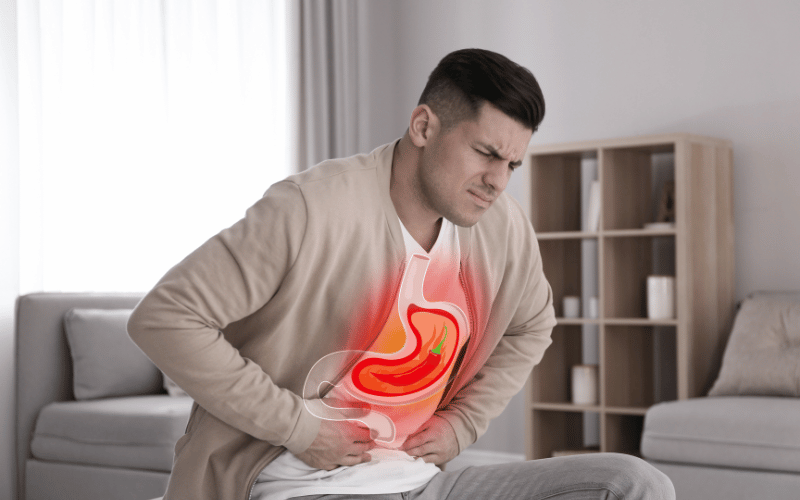3. Zollinger-Ellison Syndrome: The Overactive Acid Producer

A rare condition, Zollinger-Ellison Syndrome (ZES) revolves around the presence of tumors, known as gastrinomas, which push the stomach to produce excessive acid.
Gastrinomas are tumors that primarily form in the pancreas or the upper part of the small intestine. Their signature trait? They secrete an excess of gastrin, a hormone that prompts the stomach to produce acid.
Under normal circumstances, gastrin plays a key role in digestion. However, with gastrinomas, its overproduction leads to a hyper-acidic environment, which is a hotbed for ulcers.
Given the excessive acid produced in Zollinger-Ellison Syndrome, it’s not just the stomach that’s at risk. The duodenum, the top part of the small intestine, bears the brunt too.
With its protective mucous layer compromised by the acid onslaught, ulcers are almost a given. The pain, burning sensation, and other symptoms make ZES a particularly troublesome ailment.
Identifying ZES isn’t straightforward. Its symptoms often mirror other gastrointestinal disorders.
Management of Zollinger-Ellison Syndrome involves a two-pronged approach: treating the tumors and addressing the excess acid. Surgery to remove gastrinomas is a potential avenue, especially if they’re localized. Medications that curtail acid production offer symptomatic relief, ensuring that the duodenum gets a respite from the constant acidic assault. (3)